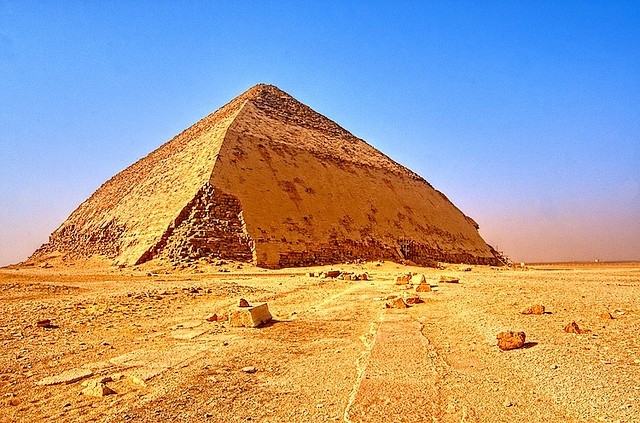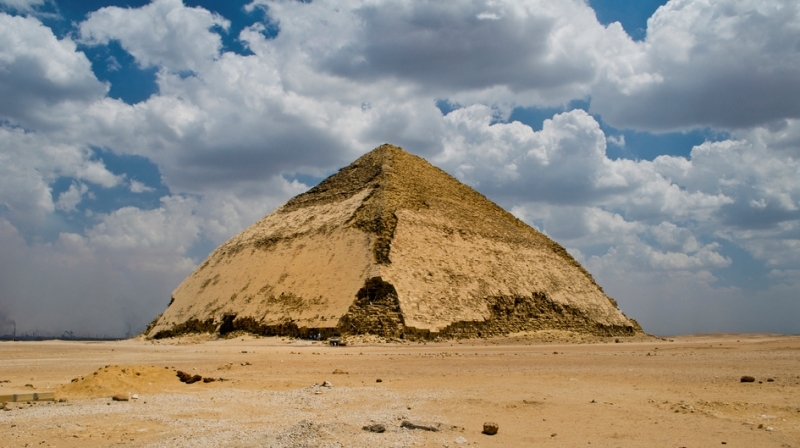Dahshur Pyramids | Egypt Pyramids
ِAncient Egyptian History
- The Middle Kingdom of Ancient Egypt
- Alexander the Great | Egypt History
- Queen Hatshepsut | Luxor | Egypt
- Tutankhamoun King | Ancient Egypt Kingdom
- Salah Al-Din Al-Ayyubi
- King Ramses II: Facts, Accomplishments, Life and Death
- Sultan Mohammad Ali
- Amr Ibn Al-Aas
- The Old Kingdom of Ancient Egypt
- The New Kingdom of Ancient Egypt
- Greco-Roman Period
- Early Islamic Period in Egypt
- Mamluk and Ottoman Period
- Egypt in the Modern Era
- Behind the Throne: Exploring the Life and Reign of Queen Cleopatra of Egypt
Cairo Attractions
- Al Aqmar Mosque | Cairo | Egypt
- Sultan Al Mansur Qalawun Mosque | Cairo
- Al Azhar Mosque | Cairo | Egypt
- Amr Ibn Al Aas Mosque | Old Cairo
- Mu’ayyad Mosque and Bab Zuweila
- Museum of Islamic Art | Cairo
- Sultan Hassan Mosque & Madrasa | Islamic Cairo
- Ibn Tulun Mosque and Gayer Anderson Museum
- Bayt Al Suhaymi in Cairo | Al Suhaymi House
- Cairo Opera House
- The Coptic Museum in Cairo
- The Egyptian Museum in Cairo
- El Ghorya | Attractions in Cairo Egypt
- Ben Ezra Synagogue | Coptic Cairo
- Khan El Khalili Bazaar
- Old Cairo and Coptic Cairo
- Salah El Din Citadel in Cairo | Egypt
- The Hanging Church | Coptic Cairo
- Al-Muizz Al-Deen Allah Street
- Downtown Cairo
- Zamalek / Gezira
- Islamic Cairo
- Souk Al Khayamiya | Tentmakers Bazaar
Alexandria Attractions
- Alexandria Travel Guide | Egypt
- Marsa Alam Information
- Qaitbay Citadel in Alexandria | Fort Qaitbay Egypt
- Pompey's Pillar (Column) in Alexandria | Egypt
- Al Alamein | Mediterranean Sea Egypt
- Alexandria Library Egypt | Bibliotheca Alexandria
- Experience the Heart of the Mediterranean: Your Guide to the Best Things to Do in Alexandria, Egypt
- The Catacombs of Kom el-Shuqafa | Alexandria
- Greco-Roman Museum
- Lighthouse of Alexandria
- Montazah Park Alexandria | Egypt
Luxor Attractions
Aswan Attractions
Nile Valley
Red Sea and Sinai
Ports of Call
Lake Nasser
Egyptian Culture and Travel Info
Located about 40 kilometers southwest of Cairo, the village of Dahshur marks the southern end of the vast pyramid field that begins at Giza. Excavations at Dahshur have revealed the remains of seven pyramids, as well as extensive tomb complexes built for queens and nobility from Memphis up until the 13th Dynasty in the Middle Kingdom.
Two of the later pyramids constructed here have been completely destroyed by time and the elements and several others, such as the Black Pyramid (12th Dynasty, 1929-1885 BC), are badly damaged, but Dahshur also boasts two of Egypt’s best-preserved early pyramids. Both built during the reign of King Sneferu (2613-2589 BC), the founder of the 4th Dynasty, the Bent Pyramid and the Red Pyramid at Dahshur are massive evidence of the architectural development that lead to the construction of the Great Pyramid and it companions at Giza.

Sneferu was the father of Khufu so the Red Pyramid and the Bent Pyramid at Dahshur immediately preceded the Giza Pyramids in their construction. Khufu’s engineers would perfect the design for smooth-sided pyramids that Sneferu pioneered in building the biggest pyramid at Giza. The Bent Pyramid is called a ‘transitional’ pyramid because the angle of its sides changes abruptly approximately one-third of the way up. Archeologists attribute this to an engineering crisis during construction. The architect realized that the steep, 54-degree inclination of its sides would make it structurally unsound. As a result, the rest of the pyramid was completed with only a 43-degree inclination. Sneferu’s second pyramid at the site was the first smooth sided pyramids ever constructed, an immediate predecessor to the Pyramids at Giza. It is also the third largest pyramid ever constructed, exceeded in height by only the pyramids of Khufu and Khafre at Giza. It is built with the same shallow, 43-degree inclination with which the upper section of the Bent was constructed.

